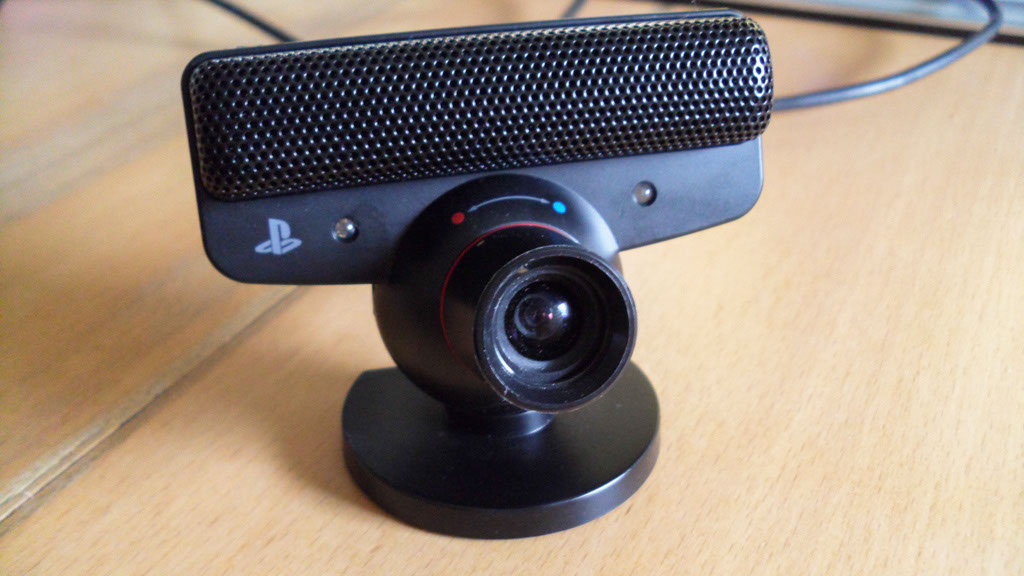

The only deterrent is the $2,500 price tag ($2,699 with a 28-70mm f/3.5-5.6 OSS kit lens), which is $500 more than the A7 III cost at launch. The A7 IV is clearly a massive leap forward for Sony's "basic" full-frame mirrorless camera series, putting it on par or ahead of most rivals. Unlike Panasonic's GH5 II however, you can't transmit via RTMP to Twitch, YouTube or other services without a phone or laptop.

The camera can also record internally while you're live streaming, providing a backup. That allows for webcam or livestreaming via apps like OBS with digital audio and effects like soft skin.
#Sony ps3 eye camera manual 1080p
You can do video and audio streaming over USB-C at up to 1080p 60 or 4K 15p if resolution is a priority over smooth video. It also offers faster transfer speeds with 5GHz WiFi and superspeed USB-C 3.2 Gen2 (10Gbps).
#Sony ps3 eye camera manual Bluetooth
If you use Sony's Imaging Edge mobile app, it will now use Bluetooth to maintain a continuous connection, rather than disconnecting as before. Lastly, Sony has introduced new live streaming and sharing features, though they're not quite up to the level we've seen on other recent cameras. RAW video isn't found on the EOS R6 either, but is available on Panasonic's $1,800 GH5s and the $2,000 Nikon Z6 II, via recorders from Atomos and Blackmagic Design. However, unlike the A1 and A7S III, there's no support for 16-bit RAW video capture to an external recorder. All of the video modes, except one S&Q setting that requires CFexpress Type A, can be captured to an SD UHS II card. It supports a number of video file types, including XAVC S All-I at up to 600 Mbps for 4K/60 10-bit, 4:2:2 movies. That means there's no pixel binning, so video should be very sharp. 4K 30fps is super-sampled using the entire 7K width of the sensor, while 4K/60p uses a 4.6K Super35 1.5X crop.

Where the A7 III was limited to 4K/30p with 8 bits of color depth, the A7 IV can handle 4K at up to 60 fps with 10 bit, 4:22 All-I capture - putting it on par with Canon's EOS R6 and the Panasonic GH5 II. Perhaps the biggest improvements with the A7 IV are on with video. As for battery life, the A7 IV delivers 610 CIPA shots on a charge, compared to 700 on the A7 III. On the A1 and A7S III, by comparison, both slots support both those formats. In terms of storage, the A7 IV offers two slots, with the top dual slot taking either SDXC UHS II (up to 300 MB/s speeds or CFexpress Type A (up to 800 MB/s), and the bottom slot compatible with SDXC UHS II only. However, it now offers an "active mode" for movies that helps smooth footsteps. The 5-axis in-body stabilization delivers 5.5 stops of shake reduction, up slightly from before, but far below the 8 stops promised by Canon's like-priced EOS R6. For videographers, the A7 IV offers a flip-out 1.03 million dot rear LCD display, making the camera far more usable for vlogging than the A7 III. It comes with a 3.68-million dot electronic viewfinder (EVF) with a more comfortable 120 Hz refresh rate, up from the 2.36-million dot, 60Hz EVF on the A7 III. Sony's A7 IV camera arrives with a 33-megapixel sensor and 4K 60p video


 0 kommentar(er)
0 kommentar(er)
